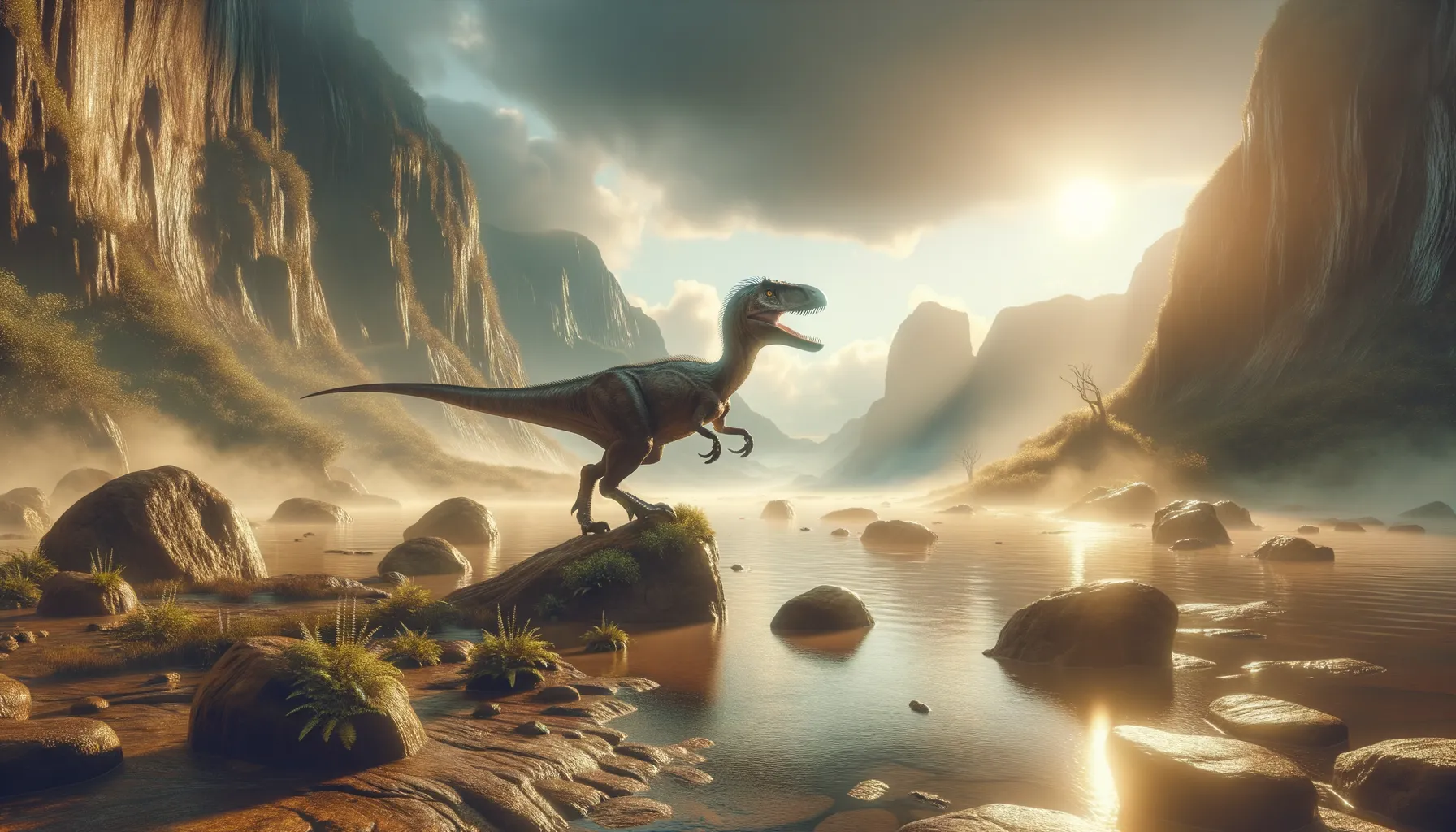
Ornitholestes
Quick-footed predator of the Jurassic.
Period
Jurassic
Length
Measured about 2 meters in length.
Height
Stood roughly 1.5 meters tall.
Weight
Weighed around 15 to 20 kg.
Ornitholestes was a small, agile carnivorous dinosaur from the Late Jurassic period. Known for its quick and nimble footsteps, it roamed North America roughly 150 million years ago. Despite its modest size, it played a critical role in the ecosystem, preying on small animals and possibly scavenging carcasses. With a sleek build, it managed both predator and prey effortlessly, showcasing an adaptability that might have been key to its survival.
Diet
Ornitholestes primarily fed on small vertebrates, including small dinosaurs and mammals. It may have also consumed insects and occasionally scavenged on larger carcasses.
Hunting
Ornitholestes likely relied on its agility to ambush or chase down prey. Using its keen senses, this dinosaur may have hunted alone, using stealth and speed to catch its meals.
Environmental challenges
Living in the dynamic environments of the Jurassic, Ornitholestes faced challenges such as finding food and escaping larger predators. The changing climate and occasionally harsh weather would have also impacted its survival. Adapting to these challenges required keen senses and rapid response to environmental changes.
Speed
Moderate runner, quick on its feet.
Lifespan
Estimated around 15 to 20 years.
First discovery
Discovered in 1900 in Wyoming, USA.
Fun Facts
- Ornitholestes lived around 150 million years ago during the Late Jurassic period.
- Its name 'Ornitholestes' means 'bird robber', although there's little evidence it preyed on birds.
- It was a small dinosaur, measuring about 2 meters (6.6 feet) in length, roughly the size of a large dog.
- Ornitholestes had a flexible tail, which may have helped it balance while running or hunting.
- This dinosaur has been found in what is now the Morrison Formation in the western United States.
- Ornitholestes was a carnivore, likely hunting small animals and possibly scavenging.
- The only known fossil of Ornitholestes was discovered in 1900 and provides insights into its anatomy.
Growth and Development
Young Ornitholestes would grow rapidly, needing to learn quickly how to hunt and avoid predators. The juvenile version was likely more vulnerable, necessitating strategies to mature safely to adulthood. Growth rates were probably influenced by food availability and environmental pressures.
Habitat
Ornitholestes lived in lush, forested areas with plenty of cover, providing camouflage from predators. These habitats also had abundant prey animals, crucial for its survival. Water sources nearby would have supported its ecosystem, sustaining both flora and fauna.
Interaction with other species
Ornitholestes likely avoided larger carnivorous dinosaurs and competed with other small predators for food. Its presence contributed to the ecological balance by controlling the populations of smaller prey species. It may have interacted indirectly with herbivorous dinosaurs, sharing habitats without directly competing.
Natural lifespan
Potentially lived up to 15 or 20 years in the wild.
Reproduction
Reproduction would have likely involved laying small clutches of eggs, buried or concealed for protection. Hatchlings were probably precocious, needing to fend for themselves soon after birth. Parental care might have been minimal, emphasizing the need for juvenile survival instincts.
Social behaviour
While mainly solitary, Ornitholestes might have come together during certain periods, such as mating seasons. Territorial behavior could have been prominent, especially to secure food resources. Vocal or physical signals might have been used to communicate with its own kind.
Fossil locations
Fossil remains of Ornitholestes have been found primarily in the Morrison Formation in North America. Wyoming has been a significant location for such discoveries, providing insights into its morphology and adaptations. These fossils help paint a picture of its life and environment during the Jurassic.
